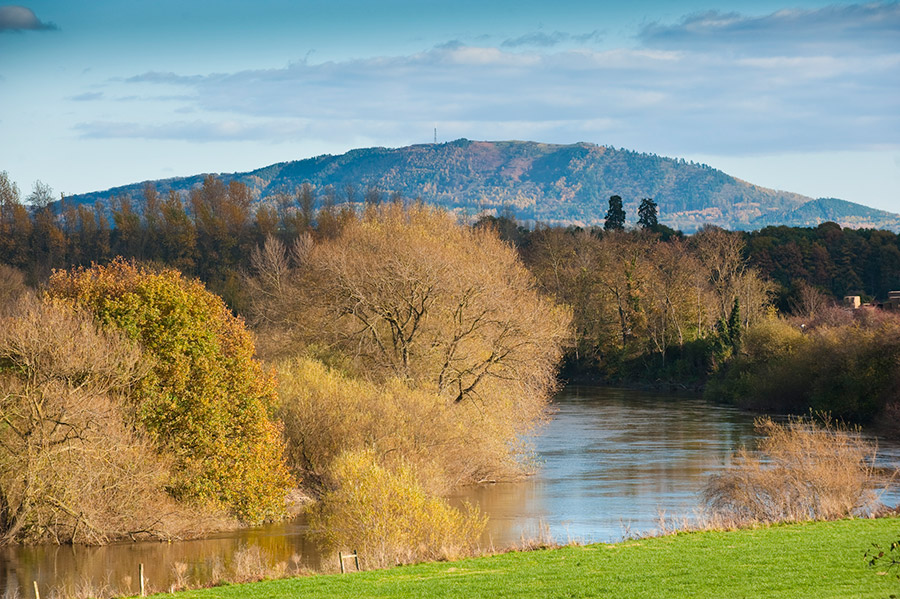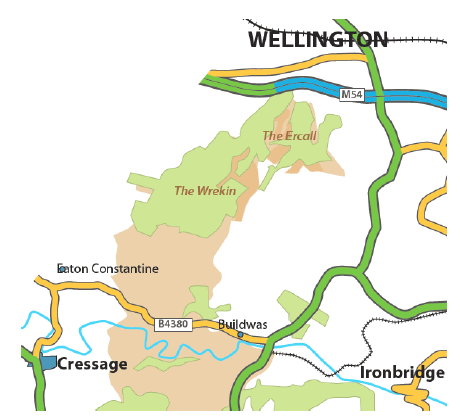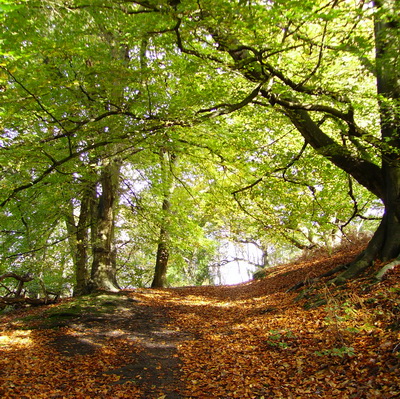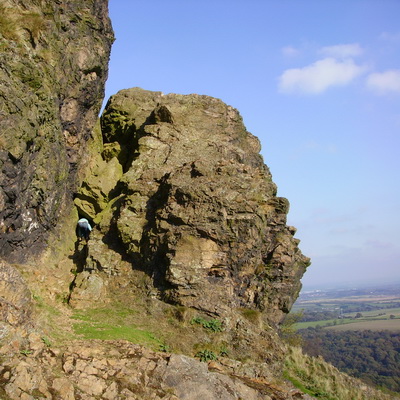The Wrekin Area
This area has distinct features and needs that are different to the rest of the National Landscape and extending into the Telford & Wrekin Council area brings different users, audiences and partners. The same principles of retaining landscape quality and engaging with local people are nevertheless still relevant. The need here to protect the environment and to manage people’s enjoyment of it is as significant as anywhere in the Shropshire Hills. Well established partnership approaches to co-ordinating management of the Wrekin area need continued support and complementing with new practical project activity.
The Wrekin is Shropshire’s iconic hill and being surrounded by lower ground, affords excellent views over much of the county and beyond. An outlying hill, the Wrekin area is the least typical part of the Shropshire Hills, lying on the urban fringe of Telford, with significant new development nearby and high levels of recreational and community use.

The woodlands on the Wrekin and the Ercall are of high quality (SSSI), and important for their geology. The area is rich in industrial archaeology and has strong connections to the nearby Ironbridge Gorge World Heritage Site. The town of Wellington has very strong cultural links with the Wrekin. The National Landscape boundary is drawn tightly around the wooded hills of the Wrekin and the Ercall, and so the quality of the surrounding area is very important as a setting for the AONB (see Policy 35 ii Setting ). The Wrekin is very important both locally and for those visiting the area, especially the main path up the north side of the hill, which is valued by a wide cross-section of people for fresh air, views and exercise.

The high level of recreational use of the Wrekin creates pressure, and there is no robust framework or resources to manage this, resulting in the quality of the landscape and visitors’ experience being less than optimal.
Shropshire Wildlife Trust manage the main car park at Forest Glen. Visitor management at the Wrekin would however benefit from a more co-ordinated approach, and adequate resources given its importance and scale of use. There is scope to improve parking provision and visitor facilities at or in proximity to the Wrekin, managing pressures and strengthening the quality of recreational offer. These however would need to be planned with sensitivity to the location and to visitor management issues and have a viable business model. Continued co-ordination of activity to manage the Wrekin Forest will depend on partners working together and with local landowners.
Telford & Wrekin Council have defined the Wrekin Forest as a Strategic Landscape, which gives it some additional recognition and protection.
The redevelopment of the former Ironbridge Power Station close to the National Landscape near Buildwas will be a big factor over the coming years. The scale and design of development need to be appropriate and sensitive.
- Development on the eastern fringes of the Wrekin and near Ironbridge needs to respond to the distinctive character of the area.
- A stronger mechanism is desirable for managing the high environmental quality of the Wrekin Forest area and its continued use by visitors. On the ground capacity to take practical action and engage with visitors is key to maintaining the quality of a well-used countryside site. Planning gain from new development nearby should be considered to help manage the increased pressure it will come under, and opportunities should be explored for using this to establish project work or a longer term arrangement.
- Enjoyment of the Wrekin area’s countryside should go along with promoting understanding of its qualities. Opportunities for participation through activities such as conservation volunteering can be improved.
- Recognition of the national importance of the National Landscape designation remains important and should be given a higher profile in the Wrekin area. Management of the Wrekin Forest area should link both ways to the wider Shropshire Hills, to Telford’s green infrastructure, and to the Ironbridge Gorge World Heritage Site.
- Priority areas for conservation action will continue to include the woods, other habitats and wildlife, and cultural heritage. Strengthening connections with local people, improvements to access, and community involvement through events, education and volunteering also remain key themes.


